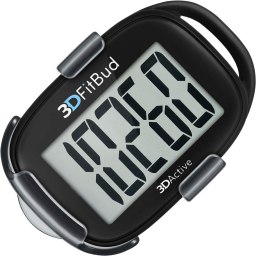Buying guide for best pedometers
First-generation pedometers were mechanical devices that did one thing fairly well: they measured footsteps. Modern pedometers can do so much more, however. Today, pedometers are an integral part of many people’s exercise routines.
Data collected by digital pedometers can be used to calculate aerobic and walking distances, caloric intake and expenditure, and other advanced measurements.
With so many of these popular step-trackers on the market, how do you decide which pedometer is right for you? If you want to know more about finding the perfect pedometer, check out our expert’s tips and tricks.
Do you need a pedometer?
Many people have a false idea about how much they move during a typical day. A pedometer is a useful way to gauge whether you’re doing enough to live a healthy lifestyle. These handy devices will provide you with step-count data, can estimate your total distance travelled, and will give you an idea of your daily calorie expenditure.
A pedometer’s hard data can motivate you to set, meet, and surpass daily movement goals. Concrete numbers make it more likely you’ll take the stairs over the elevator or get up from your desk during the workday.
If you prefer simplicity, a pedometer is the way to go. Most pedometers are basic devices that provide simple data to the user.
Many smartphones include internal sensors that keep track of steps. However, they are often inaccurate because it's not always convenient or possible to keep your cell phone close to your body at all times. A pedometer is easy to wear all day, and you won’t have to worry about missed steps.
Inconspicuous pedometers can be tucked away in your waistband, so no one else has to know you’re busy tracking your movement.
Many pedometers have better battery lives than smartwatches or smartphones
Types of pedometers
Mechanical pedometers
Mechanical pedometers were the first step-tracking tools on the market.
These older pedometers use a pendulum function that moves each time you move, increasing the step count on the device.
Electronic pedometers
Electronic pedometers use a pendulum in addition to an electronic component. Each step is counted and displayed on an LCD screen.
These units also convert your step count into distance, which is a more relatable measurement.
GPS pedometers
The newest pedometers use accelerometers to calculate the number of steps you take throughout the day.
GPS devices offer the most accurate step and movement data but are also the priciest pedometers.
What to look for
Size
For the most accurate step count, wear a pedometer close to your body. A slim, lightweight pedometer is the most comfortable to wear.
If you’re comfortable wearing a pedometer — or better yet, don’t even notice it on you — you’ll be more inclined to keep using it.
Ease of use
When deciding between pedometers, take into account how open you are to learning the ins and outs of your new device.
Those who prefer to keep things simple should stick with basic models without too many bells and whistles. If you’re tech-savvy, a pedometer with a more complicated interface might be best for you.
Extra features
Some advanced pedometers can detect false step readings and feature modern touchscreens.
Price
In general, pedometers are fairly inexpensive. The simplest models only provide step data. More expensive models are more durable and come with plenty of features, like automatic activity recognition and the ability to record steps for different stride lengths.
Tips
Finding it hard to get in the amount of steps you want? Choose walking as your mode of transport, or park farther from the store when running errands.
Check your pedometer’s accuracy by literally taking it for a test drive. Note the step count before your ride, and after the drive see if the number has changed significantly.
Read a pedometer’s instructions carefully for where to place it on your body for the best data collection.
FAQ
Q. Are pedometers accurate?
A. While pedometers do provide the user with a good general idea of his or her daily steps, the data is not always completely accurate.
Q. Where should I wear a pedometer?
A. Most pedometers come with instructions to direct you on the best placement for the specific device. Generally, clip-on style pedometers should be clipped near or around the waist area. Some devices work when placed in your pocket. However, the bumping around could lead to false readings.
Q. How many steps should I aim for in a day?
A. Many doctors and nutritionists say 10,000 steps is the magic number. However, if you're starting to count your steps and find yourself peaking at 5,000 or so, don’t despair. Work in increments to increase your goal. There’s no reason to stop at 10,000 steps either!
Q. Does the way I walk matter?
A. Yes. You’ll notice that you’ll get a different reading if you run rather than walk. Some pedometers will allow you to input your stride length and calibrate the device to your specific gait.
Q. How can I get in more steps in my day?
A. Choose the stairs when you’re heading up to your office. Take breaks in your workday to loosen up your legs. If you have a dog, take your pet for a brisk walk. A pedometer can provide you with the motivation you need to get up and get moving.























